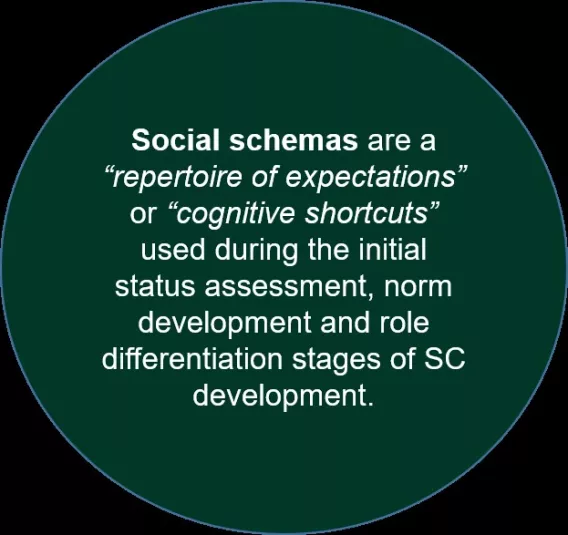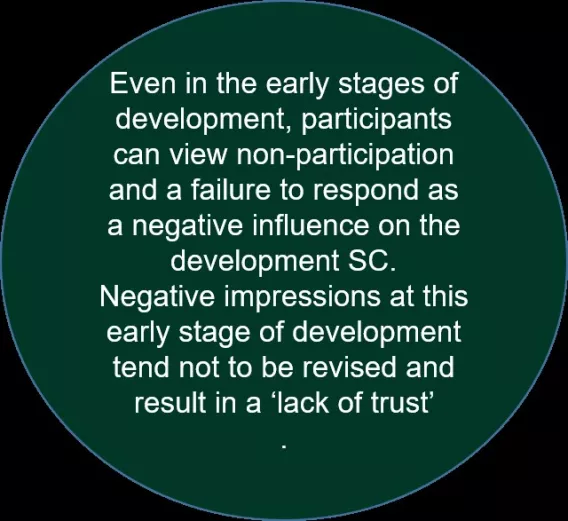By Robert Dalton.
Reading time: ~6 minutes.
Featured Image Source: Four Legged Race from PresenterMedia
Hello, and welcome to this week’s LTF blog post. My name is Robert Dalton and I am the Senior Learning Technologist in the Kemmy Business School. Personal and professional drivers motivated my interest in this area. Having experienced the power of Social Connectedness (SC) and its impact on my learning experience during my online studies, it triggered a deep curiosity in how SC could be fostered to benefit the learning experience of students on programmes I design and develop in a professional capacity.
Introduction
The advantages of online education are several, such as the flexibility offered by the nature of online delivery to schedule personal life around study, the perceived equitable and democratic nature of online fora, and in some course designs the culture of reflection that can facilitate higher order learning outcomes. Social constructivist learning theories and distributed cognition are central to most online course designs and the desire for student relationships for cognitive and motivational support. Peer interactions play a vital role in effective learning and this post will focus on a specific emotional and social dimension of social connectedness (SC), its impact on course design, and the intended purpose and effectiveness of current interactive pedagogy.
I hope this will contribute to the conversation around best practice in the design of online programmes and communities. The post will be published in 3 parts on Monday, Wednesday, and Friday under the headings below. If you have any queries or would like to extend the conversation in this area, please feel free to contact me directly at Robert.Dalton@ul.ie
- Monday: How do students develop and experience social connectedness online?
- Stages of Development
- Some interesting points to note - Wednesday: What impact does social connectedness have on the learning experience?
- Friday: How can pedagogical strategies and course design enhance social connectedness among participants in online courses?
While no universal definition of SC exists, for the purpose of clarification, the definition of SC most amenable to an understanding and application to online learning is as follows:
The subjective appreciation of the outward expression of emotion, affect, and feelings by individuals and among individuals within one’s personal and reciprocal community of inquiry
This working definition comprises an emotional and interdependent state that can now be used as a lens to explore how SC is developed, experienced, and enacted through current pedagogy and course design in online learning environments.
1. How do students develop and experience social connectedness online?
In an online learning environment, the social information processing steps of status assessment, norm assessment and role differentiation that students use to develop a group social structure are still applicable. The only difference is the communicative channels afforded by the learning environment that are used by participants to process the personal characteristics and behaviours of others, which in turn frames the social context of how to respond as a member of that community.
A student’s ability to process and filter social information and apply traits to other online students is dependent on the social schemas they have developed. When moving instruction online, the potential to neglect the social information processing support can affect the fostering of online groups and stable patterns of interactions among group members.

However even with a limited social support structure, online groups can develop but not very efficiently or effectively as they lack the revised person, event and role schemas needed as part of the natural development of group structure over time.
To address these deficiencies three strategies are recommended that when incorporated into a framework for thinking more systematically about each stage of development can guide course design for enhancing SC in online learning environments, namely:
1. Increased interactions
2. Technical support
3. Persistent follow-up
Processing and negotiating social information online can pose a challenge for most participants. This can be further compounded as often participants enter online learning programmes with expectations based on a traditional face-to-face learning experience.
SC needs to be viewed as a development process. It does not develop as a result of single interactions but instead is the result of frequent opportunities for online learners to revise their social schemas along a stable and enduring social development framework.

This “naivety” in expectations as participants ‘arrive’ on a blended or online programme needs to be addressed at the induction stage through a process of building resilience to the technological, emotional, spatial, and temporal elements and a realisation of the socio-emotional complexities of engagement and participation that constitute the online learner’s experience. Initial status assessment starts here. Designed to include both task and socio-emotional introductory activities, induction allows for students to observe each other’s interactions and the intent of each other’s level of engagement within a safe social space.
Initial status assessments get further revised as participants engage in formal course work, scaffolded by designed interaction treatments in the form of e-tivities that are designed to elicit ‘double-loop’ dialogue between peers. They create a fertile ground for exploring personal convictions and press for understanding by virtue of peer review. Each with a specific purpose and intended outcome, participants build on and revise earlier impressions and intent by their peers through engagement with such interactions.
If you would like to read more on e-tivities, this was covered by Dr Darina Slattery in the Quick Tips for Teaching Online post, 9 Tried-and-Trusted Strategies for Quality Online Delivery (part 1).
Some interesting points to note
- The development of trust and respect is not determined by the frequency of interactions, rather it is dependent on the responsiveness and quality of engagement exhibited by peers in such ‘formal’ spaces.
- Engagement with early programme forum posts that offer little critique and constructive criticism and where the intent and engagement is interpreted as a ‘tick box exercise’ can be viewed negatively.
- Formal group work can act as a catalyst and an integral component to getting to know other participants. Group work also affords participants the opportunity to affirm or revaluate earlier social schemas (impressions) formed through asynchronous discussion forums.
- Initial status assessment is determined by the quality of engagement exhibited by peers in scaffolded discussion forms and not by harmonies in personal characteristics and interests.
In summary, the positive and negative emotions related to the interactive complexity of online learning can be a challenge for participants. What emerges in a knowable development process and a pattern of interaction and behaviours that can be used to inform pedagogical strategies and course design that enhance SC among participants in blended and online courses. This is something we will look at in part 3 of this post on Friday.
In part 2 of this post I will explore and consider the impact that social connectedness has on the learning experience.